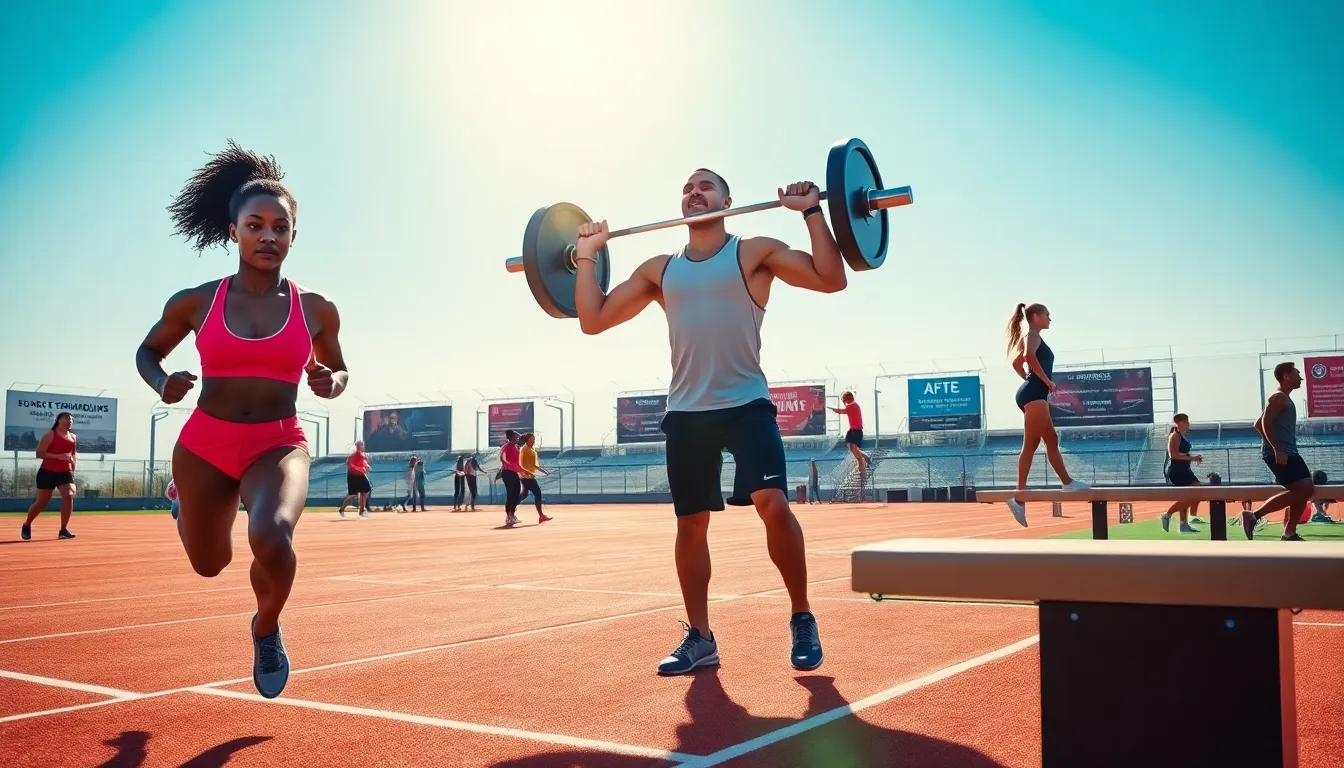As the landscape of competitive sports continues to shift, one phrase emerges more frequently in discussions among fans, athletes, and analysts alike: the “Rate Competitions Plateau.” This phenomenon reflects stagnation in competition levels that affect everything from performance metrics to how teams strategize for success. Understanding its implications is essential for all stakeholders within the sports arena, from players to governing bodies. In this text, they will jump into the key elements surrounding the Rate Competitions Plateau and explore its impact on athletes and teams, analyze recent competition results, and discuss the future outlook of sports competitions.
Table of Contents
ToggleUnderstanding The Rate Competitions Plateau

What Is The Rate Competitions Plateau?
The Rate Competitions Plateau refers to a phenomenon in competitive sports where there is minimal improvement observed in performance metrics over a defined period. Athletes and teams reach a stage where even though rigorous training, advancements in technique, or high-profile recruitments, they struggle to surpass established benchmarks.
This plateau can be attributed to various factors, including the evolution of training techniques that hit diminishing returns, increased competition among athletes, and even the strict regulations imposed by governing bodies. It highlights a crucial time when innovation is needed to spur growth and raised standards.
Key Factors Contributing To The Plateau
Several factors lead to this plateau effect in sports:
- High Competition Levels: As sports become more accessible and popular, more athletes enter the field, intensifying the competition. This raises the overall standard, making it increasingly difficult for any one athlete or team to stand out.
- Advanced Training Methods: While training methods have vastly improved, many techniques may be reaching their limits, preventing further enhancement in athlete performance.
- Technological Limitations: Even though innovations in sports technology, such as wearables and performance analysis tools, these resources are only as effective as the data they provide. If all competitors use similar technologies, advantages become negligible.
- Psychological Barriers: Mental health and psychological resilience have become a primary focus in sports. Athletes frequently face immense pressure, leading to stagnation in results as they confront personal and external challenges.
Impact On Athletes And Teams
Current Trends In Sports Competitions
Current trends show a noticeable rise in the Rate Competitions Plateau across various sports. According to recent studies, many athletes find it challenging to break personal records or achieve new career milestones. From basketball to track and field, the pattern is evident: athletes excel to a certain level but struggle to maintain or improve their performance.
This stagnation affects not only individual athletes but also teams. In team sports, a plateau can lead to decreased morale, as athletes may feel their maximum potential has been reached. It fosters an environment where teams hesitate to invest in new training methods, fearing that they will yield no significant gain.
Technological Innovations And Their Effects
While technology has played a role in sports advancement, its contribution to overcoming the Rate Competitions Plateau has had mixed results. Innovations such as biomechanical analysis, virtual reality training, and data analytics have transformed how athletes prepare for competitions. But, when all competitors use similar technologies, the edge can diminish.
The saturation of technology in sports can lead to uniformity in training, which inadvertently contributes to plateau formation. Hence, sports organizations must continue to evolve and innovate technologically to maintain competitive advantages.
Analyzing Recent Competition Results
Case Studies From Prominent Sports
Recent results from major global events, such as the Olympics and World Championships, illustrate the Rate Competitions Plateau. For example, in track and field, several events saw little change in world records over the past decade, hinting at a stagnation in performances.
Similarly, in professional basketball, the average scores in key league games have remained relatively constant even though enhanced training regimens and leading-edge analytic strategies.
These case studies reveal commonalities in preparedness strategies, athlete burnout, and the importance of developing new skills that are not yet standard in competitive training.
Comparative Analysis Across Different Sports
A comparative analysis of various sports highlights glaring disparities in how athletes and teams experience the Rate Competitions Plateau. In combat sports like boxing, rapid advancements in training and technique have produced champions who are consistently raising standards. But, in traditional sports like swimming and athletics, athletes often find themselves constrained within established records.
This analysis showcases that while the nature of competition is essential, the dynamics involved vary across sports, influenced by factors like cultural significance, technological adoption, and investment in athlete development.
Future Outlook Of Sports Competitions
Strategies For Overcoming The Plateau
To address the Rate Competitions Plateau, sports organizations and athletes must focus on innovation and adaptability.
- Customized Training Programs: Tailoring training regimens to individual athletes can help them break through personal barriers.
- Integrative Approaches: Combining physical training with mental coaching can help athletes push through psychological limitations.
- Cross-Disciplinary Techniques: By looking at success in unrelated fields, sports organizations can inspire novel strategies.
- Enhanced Collaboration: Stronger partnerships between teams and technical experts can create a stable environment for improvement and creative breakthroughs.
Role Of Governing Bodies In Shaping Change
Governing bodies play a pivotal role in shaping the future of sports competitions. Policies that encourage innovation while maintaining fairness in competition are critical. For instance, they can invest in research that seeks to unveil new performance-enhancing training methods or regulations that ensure athletes receive adequate mental health support.
Also, these bodies can initiate programs designed to increase inclusivity in sports, which may lead to a broader pool of talent contributing to breaking through the plateau. Collaboration at all levels, from grassroots to elite performance, will help usher in a new era of competitive excellence.
Conclusion
The Rate Competitions Plateau presents a significant challenge in the current sports landscape. Understanding its implications is vital for athletes, teams, and organizational bodies seeking to enhance performance and foster competitive environments. Moving forward, embracing innovation, forging partnerships, and supporting athlete mental health will all play a crucial role in transcending this plateau. The drive to elevate competition levels not only benefits sports as a whole but also inspires future generations of athletes to continually aim for improvement.


